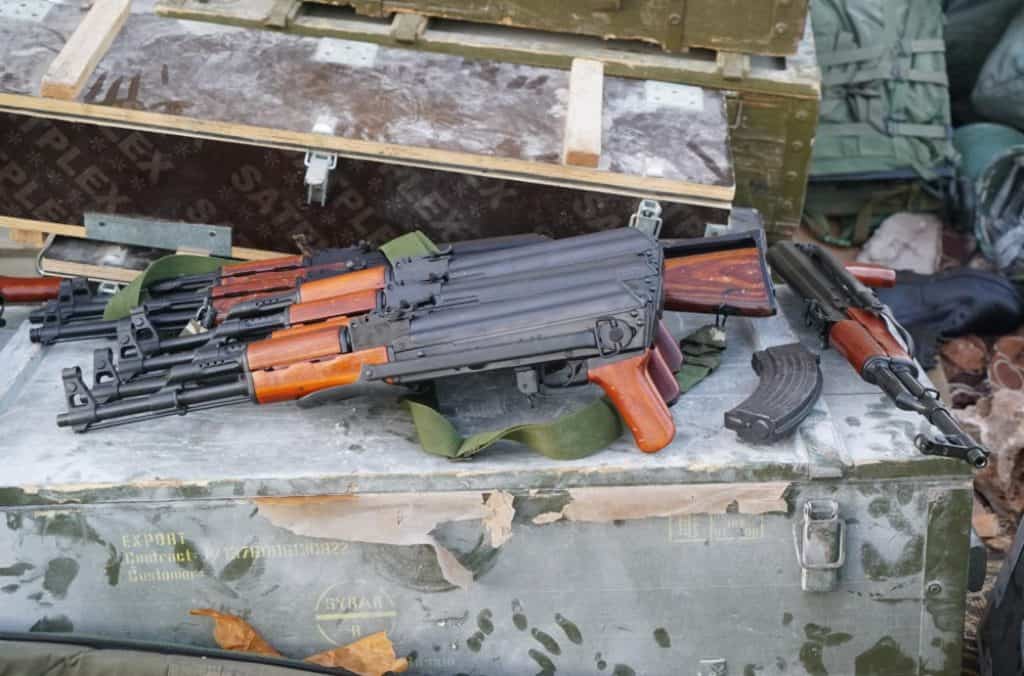
On the morning of October 24, Hezbollah launched 50 rockets at northern Israel, one of the largest barrages in recent days. Hezbollah continues to launch between 100 and 200 projectiles a day, mostly rockets and some drones. On October 23 and 24, the Israel Defense Forces (IDF) continued operations in southern Lebanon, uncovering large amounts of Hezbollah munitions. The IDF also carried out air strikes in the Lebanese cities of Tyre and Beirut.
Hezbollah rocket fire on a northern Israeli city seriously injured a person on October 23. “A 50-year-old Israeli man was seriously injured on Wednesday after an interceptor shrapnel hit his head in Nahariya, located in northern Israel. The IDF Spokesperson’s Unit also reported that 25 rockets were launched toward the city, Golan Heights and Western Galilee regions from Lebanon. Sirens also sounded in Hadera, located further south,” Ynet reported. Four people were also injured on October 25 due to Hezbollah rocket fire.
The IDF releases data on Hezbollah attacks daily. It classifies them by the number of projectiles that were launched and entered Israel, not including those that fall in Lebanon or are launched against IDF troops operating in southern Lebanon. Most of Hezbollah’s attacks are rockets, but the group launches drones almost every day as well. On October 19 and October 20, a total of 200 projectiles reached Israel from Lebanon. The attacks decreased on October 21 to 170 projectiles, and 140 and 135 over the next two days. October 23 began the Simchat Torah holiday in Israel, and Hezbollah often increases attacks on holidays. Simchat Torah is also the one-year anniversary of the Hamas attack on Israel in the Hebrew calendar, which differs from the Gregorian calendar used in most parts of the world. Therefore, the Gregorian October 7 anniversary took place two weeks before the Hebrew calendar anniversary.
The Israeli Air Force (IAF) carried out several precision airstrikes in Lebanon on October 23 and October 24. On October 23, the IDF called for Lebanese to evacuate an area in Tyre on the coast. This city includes a number of archaeological sites, and the area evacuated is a built-up neighborhood between the historic Hippodrome, the Roman baths, and Crusader-era city ruins. “Over the past day, the IAF conducted intelligence-based strikes on several command and control centers belonging to the Hezbollah terrorist organization, including those belonging to the ‘Southern Region’ Unit, in the area of Tyre, southern Lebanon,” the IDF stated. The IDF said the city is a “key terrorist stronghold” where Hezbollah southern command directs attacks at Israel.
In another precision strike, the Israeli Air Force eliminated Khalil Mohammad Amhaz, who the IDF described as “a terrorist operative in Hezbollah’s Aerial Unit (127), in the Hermel area of Lebanon.” He was involved in launching drone attacks on Israel. Hezbollah used drones to target the Israeli prime minister’s house and a Golani training base in recent weeks.
In addition to these strikes, the IDF also carried out strikes in Dahieh in Beirut. One struck a weapons storage facility on October 23. Another strike overnight between October 23 and 24 also targeted “several weapons storage and manufacturing facilities belonging to the Hezbollah,” the IDF said. “All the sites are located by Hezbollah under and inside civilian buildings in the heart of populated areas, in yet another example of Hezbollah’s systematic abuse of civilian infrastructure and willingness to endanger the population in the area,” the IDF added. Footage from strikes in Beirut showed missiles slamming into the bottom of several buildings, collapsing the buildings rapidly.
Ground operations in southern Lebanon continued the process Israel has engaged in since its troops first entered the country in force on October 1. The 146th Division’s 205th Reserve Brigade “dismantled dozens of tunnel shafts and terrorist infrastructure, eliminated dozens of terrorists, and located large quantities of weapons,” the IDF said. The unit found rocket-propelled grenades (RPGs), Kornet anti-tank missiles, and other weapons. The 646th Brigade, also operating under the 146th Division, dismantled Hezbollah hideouts and combed the area for weapons and “terrorist infrastructure.”
The IDF estimated on October 23 that it had eliminated 70 members of Hezbollah. In one encounter, elements of the 36th Division claimed to have killed 20 Hezbollah personnel. Hezbollah commanders in Jibchit, Jouaiya, and Qana were also targeted by airstrikes.
On October 24, the IDF continued to push forward, striking 160 Hezbollah targets. These included a number of elements that were involved in rocket launches. IDF forces found AK-47s and shoulder-fired missiles, as well as “hundreds of anti-tank missiles, mortar shells, missile launchers, explosives and more.” Israel’s war on Hezbollah, launched on September 23, 2024, has reached the one-month mark.







